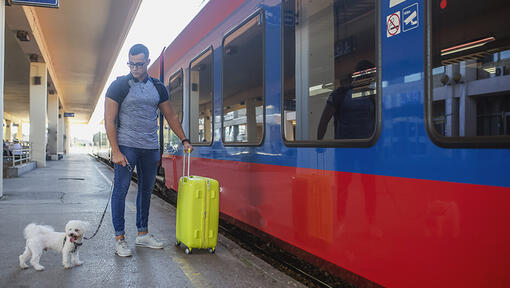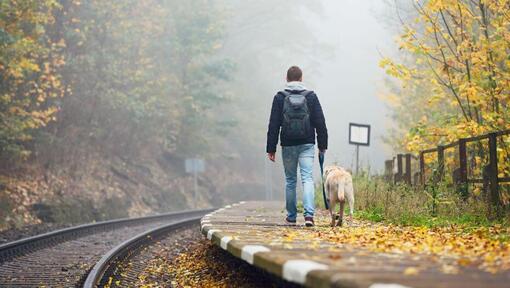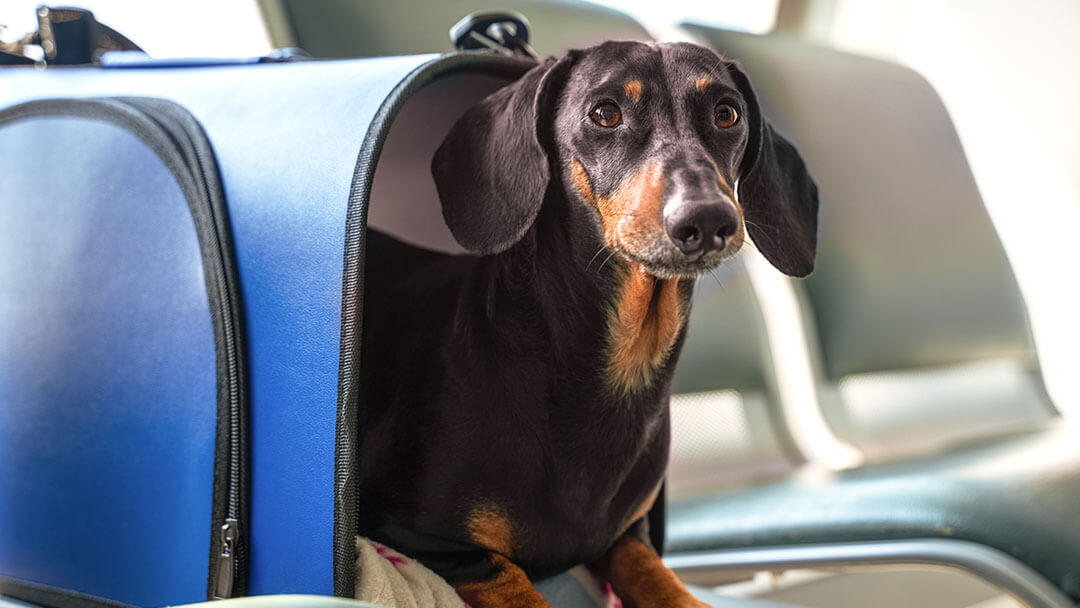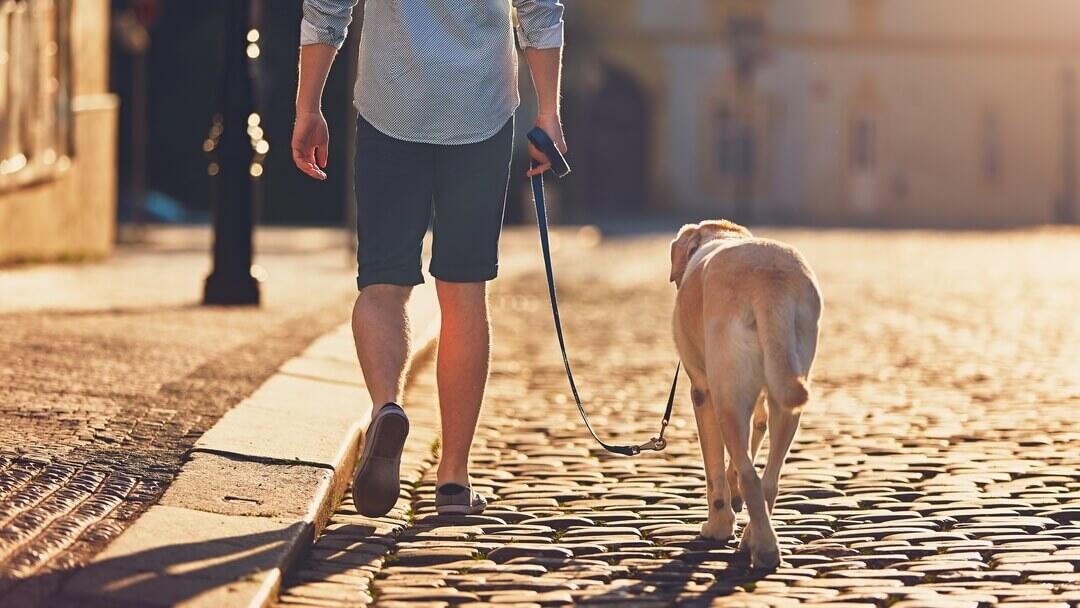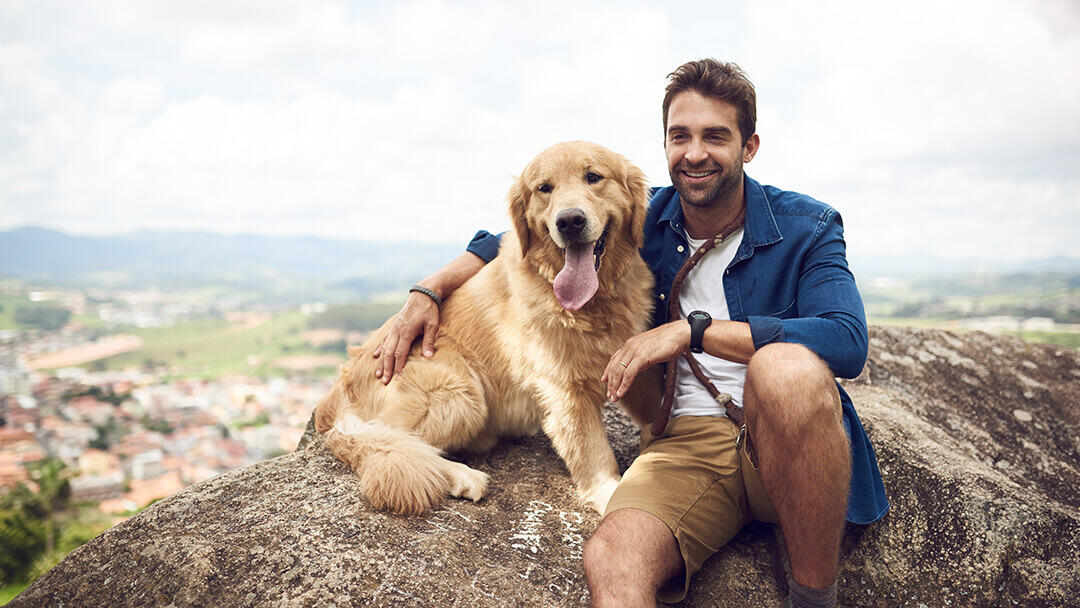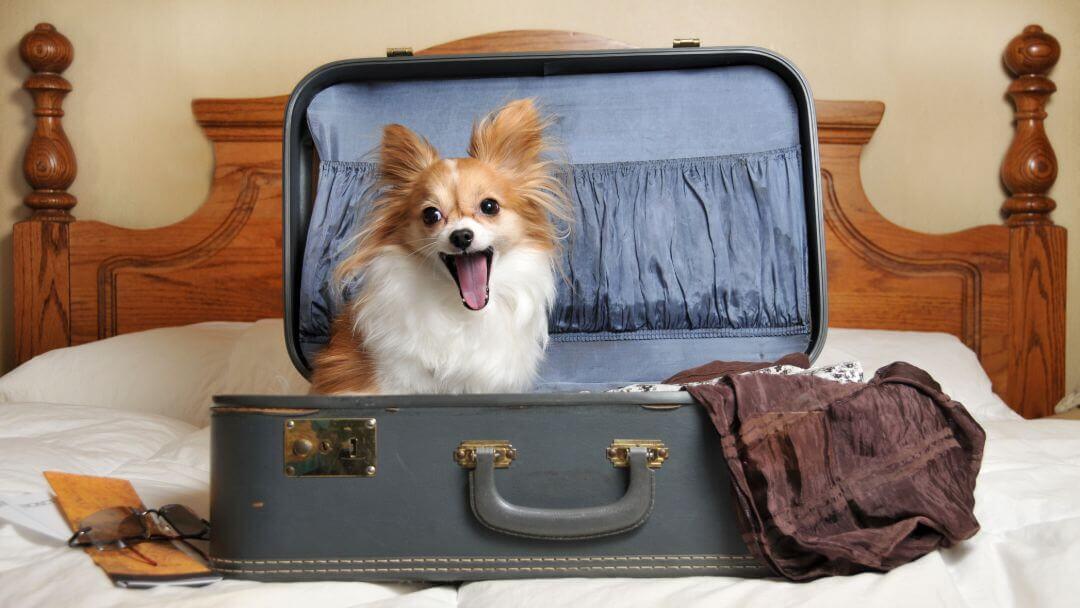
A lot of us travel by train these days, purely because it’s quick and convenient, and means we don’t have to battle to find somewhere to park but what may seem like a breeze for you can present additional challenges for our four-legged companions. Read this article to find out our top tips for taking dogs on the train.
Travelling around by train or underground can be quick and convenient, but what about when you want to bring your dog?
Here’s how to make the train journeys stress-free and enjoyable for you both.
Can I take my dog on a train?
Yes, the majority of train operating companies allow dogs to travel on trains free of charge.
They do however have their own set of rules you’ll need to follow in order to take your dog on the train. Usually you will only be able to take two dogs and they will have to be kept on a lead or in a carrier. They are not allowed on the seats, and are not allowed in restaurant cars. There may have specific times such as rush hours where you will not be permitted to travel with a dog (unless they are an assistance dog).
Before travelling you should visit your train operator’s website and read up on the specific rules and limits they have around pets – or go to your local station and ask the staff there for advice.
Keep reading to find out our top tips to make your furry friend feel more comfortable when travelling on a train.
Before the journey
Your first train journey with your dog should NOT be when you need to do a long trip or be somewhere important.
You will know when you first get your puppy or your dog if train journeys are going to be a part of their life with you. Incorporate this into your early socialisation and get them used to stations, ticket barriers, platforms, trains long before you plan to travel.
Use the station – and even the platform - as a training venue. Practise some sits and downs – or any exercises your dog knows well – and reward them generously with treats that they love. Build up positive association with the station.
Let them hear and see trains from a distance. Once they are happy, you can let them get a bit closer.
Once they are happy with all that train travel brings, you can plan some short (one-stop) journeys at very quiet times – maybe to somewhere you can have an enjoyable walk before heading home again.
As with all your socialisation and habituation, this needs to be positive and enjoyable for your puppy at all times. Never make them do anything that they are not happy with or put them in a position where they are worried or concerned by any aspect of the journey. The secret is to take it slowly and introduce this part of their life the same way you do everything else in those early weeks.
Obstacles at the train station
When visiting a train or underground station with your dog there are a number of obstacles you may have to go through. The first is ticket barriers. Practice these before you need to travel so they do not worry your or your dog. If you have done a Good Citizen’s Test, this is exactly the same skill as you train for going through a gate.
Where there are staff, ask them to let you through, or else use the bigger mobility access barriers that are available for those who need them and people with large luggage, and keep your dog on a short lead so they can’t try to slip under the barrier before it opens.
It’s also important to remember not to use any escalators unless your dog is small enough to be carried. These are very dangerous for dogs who can get their coat or feet caught, and their use is clearly prohibited. Either use the stairs or a lift if available.
Keep your dog behind the yellow line and don’t allow strangers to talk to your dog – even if your pup is usually friendly. The additional stress of traveling can make dogs behave unpredictably.
Taking your dog into a crowded train station
Always try and travel with your dog at quiet times of the day. When travelling with your dog on a train one of the most stressful parts of the journey for your dog can often be battling your way through a large crowd before you board the train. This can be extremely difficult for a dog, no matter how confident (after all, it is fairly stressful for us!) and so we advise you try to avoid rush hour as much as possible when planning to travel with your dog on a train. Outside of rush hour the station should be quieter, and your dog will not have to push through a packed sea of legs.
It’s also important to make sure you keep your dog close to you on a fixed lead when walking through the train station. This will keep them safe – and make sure no one falls over your dog or gets tangled up in your trailing lead.
Always pay attention to your dog when you are walking through the station to make sure they are not getting worried or stressed.
You may also find it useful when walking with your dog in a train station to carry treats with you So you can give them plenty of rewards for their good behaviour which will reinforce the joys of train travel and give them positive associations.
Travelling with a dog on the train
When you start taking longer journeys, make sure your dog has had a walk and has been to the toilet. Train journeys will often mean spending quite a long time with no toilet opportunities. Have plenty of poo bags, cloths and fresh water with you – just in case.
Once you have boarded the train or underground, there are a number of tips and guidelines you should follow to not only make the journey better for your dog but also for the people around you.
If you can, try and find a carriage that is not too busy for you and your dog to sit in. Quieter carriages are less stressful for your dog and will help them to relax. It will also give them more floor space to sit and lie down in.
If the first train that arrives is busy, consider waiting for the next one.
When travelling with a dog on the train, it’s important once you have found a seat not to let your dog sit or lie down on the seat next to you. Most trains ban pets from sitting on seats, and if you do not follow this rule it could lead to a fine or even both you and your pet being ejected from the train. The ideal place for your dog to sit or lie down would be in your leg space by your seat. This way you can keep an eye on them and they can be close to you and feel safe. If train travel is going to be a regular thing, you can buy lightweight fleece blankets that you could use for your dog to lie on – as the floor often isn’t very pleasant!
When walking through the train with your dog you should avoid going through the restaurant carriage. Most train companies have rules that do not allow dogs to sit in or even walk through this carriage. Exceptions are only made for assistance dogs. Breaking this rule could result in a fine or being asked to leave the train.
Once you have boarded the train, you and your dog may encounter other pets travelling. Even if your dog is good with other animals, you don’t know how the other pets will react, that’s why we advise you try to keep all dogs separate where possible when taking your pup on the train or underground. This definitely isn’t play time!
Make sure you have water with you. Train carriages can get warm and your dog might need a drink.
The secret to successful train travel is preparation – and making sure your dog is happy and content with everything train or underground travel brings. By doing this, and by planning your journeys careful, you and your dog can have a great time exploring and having some great days out together.



